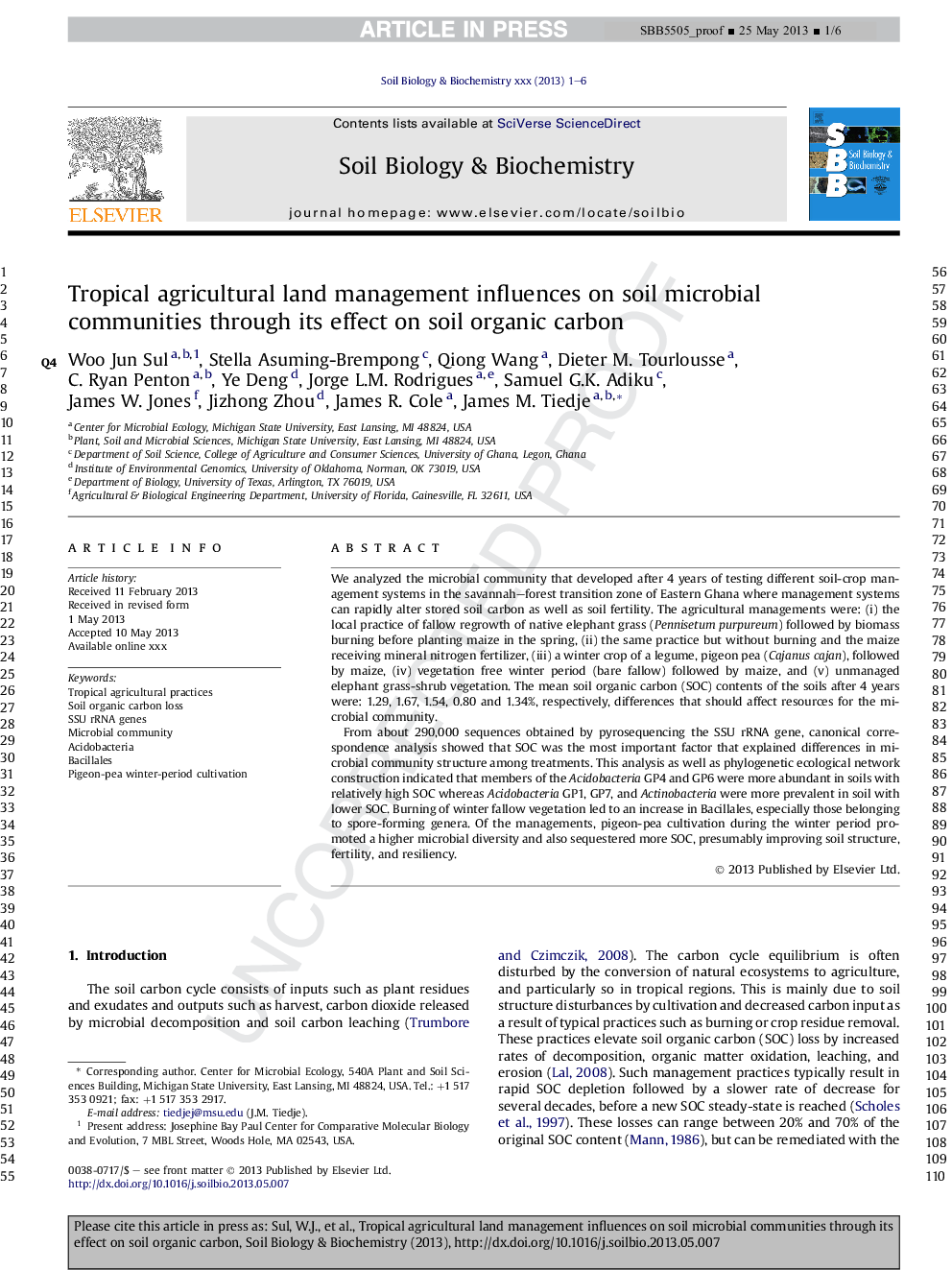| Article ID | Journal | Published Year | Pages | File Type |
|---|---|---|---|---|
| 8365194 | Soil Biology and Biochemistry | 2013 | 6 Pages |
Abstract
From about 290,000 sequences obtained by pyrosequencing the SSU rRNA gene, canonical correspondence analysis showed that SOC was the most important factor that explained differences in microbial community structure among treatments. This analysis as well as phylogenetic ecological network construction indicated that members of the Acidobacteria GP4 and GP6 were more abundant in soils with relatively high SOC whereas Acidobacteria GP1, GP7, and Actinobacteria were more prevalent in soil with lower SOC. Burning of winter fallow vegetation led to an increase in Bacillales, especially those belonging to spore-forming genera. Of the managements, pigeon-pea cultivation during the winter period promoted a higher microbial diversity and also sequestered more SOC, presumably improving soil structure, fertility, and resiliency.
Related Topics
Life Sciences
Agricultural and Biological Sciences
Soil Science
Authors
Woo Jun Sul, Stella Asuming-Brempong, Qiong Wang, Dieter M. Tourlousse, C. Ryan Penton, Ye Deng, Jorge L.M. Rodrigues, Samuel G.K. Adiku, James W. Jones, Jizhong Zhou, James R. Cole, James M. Tiedje,
